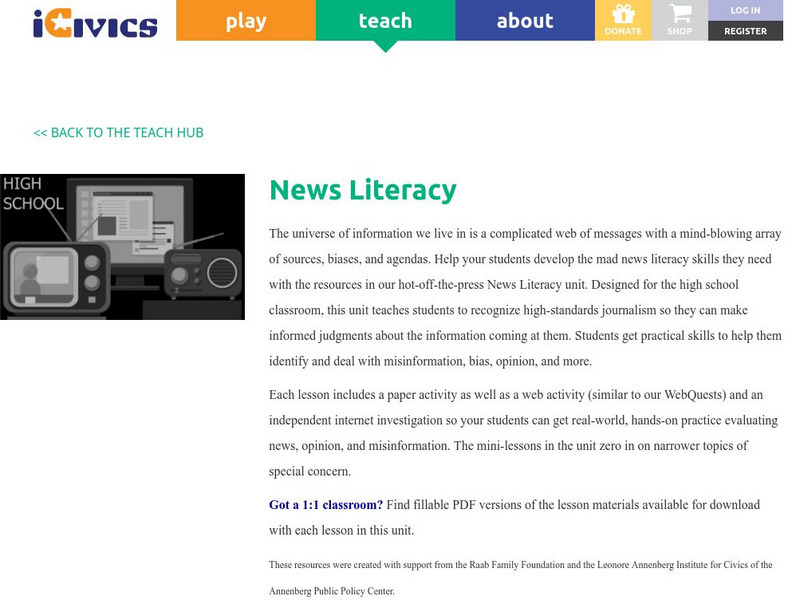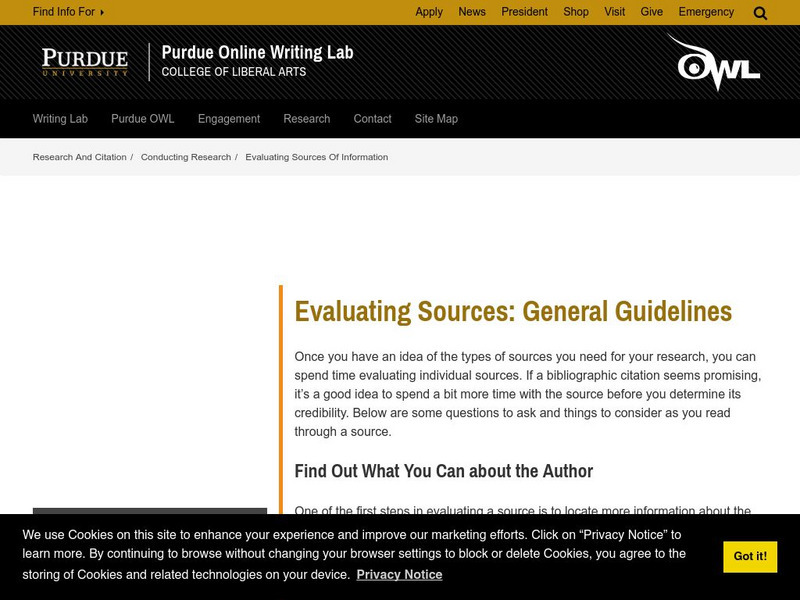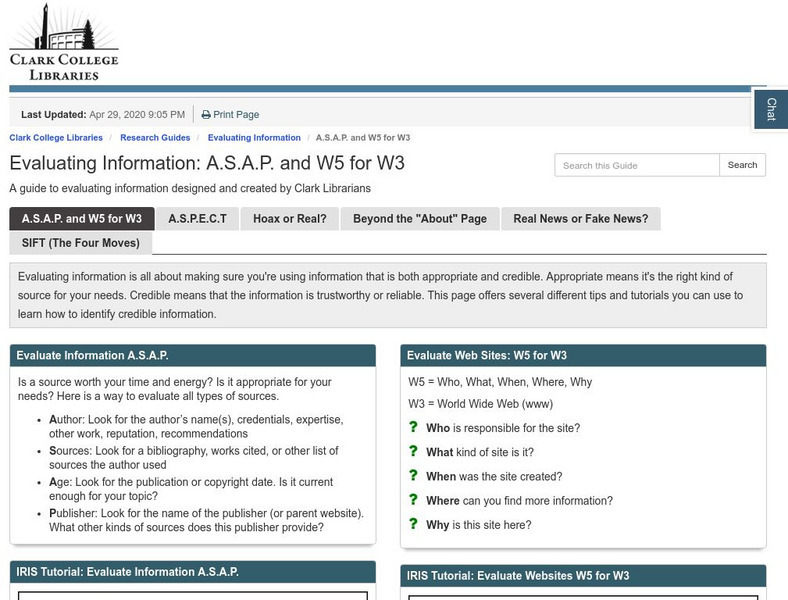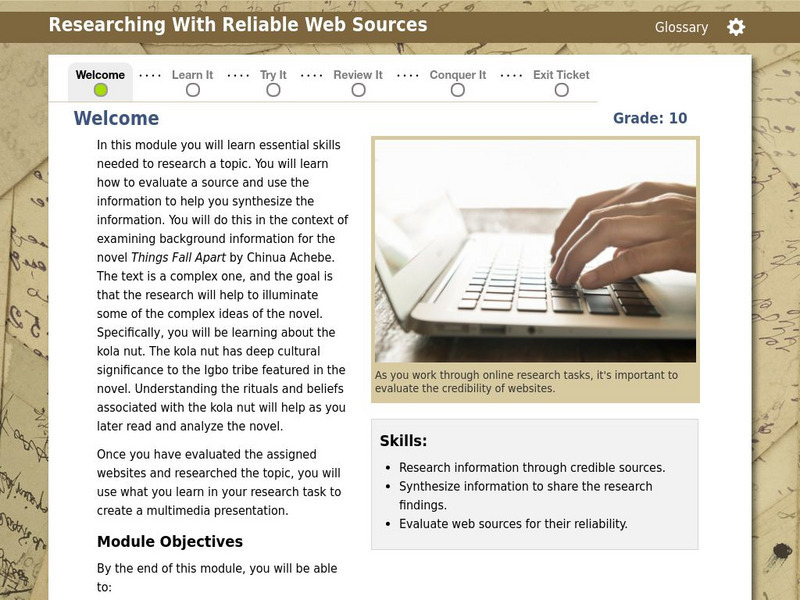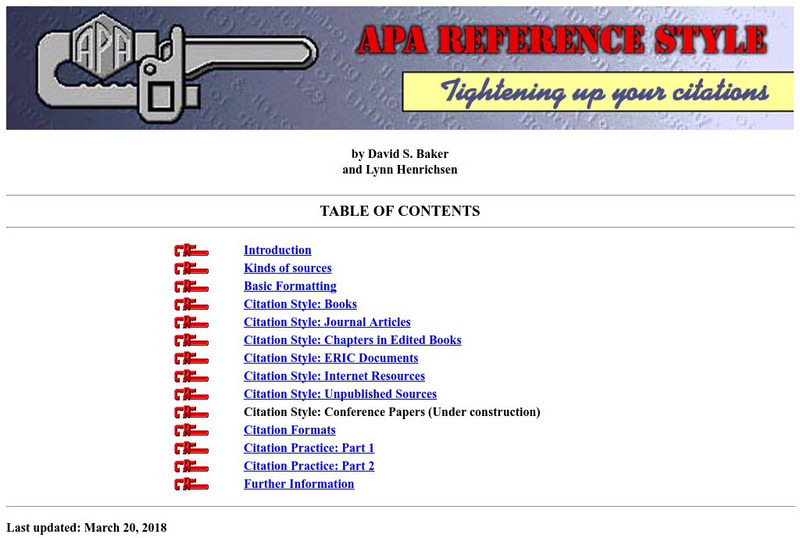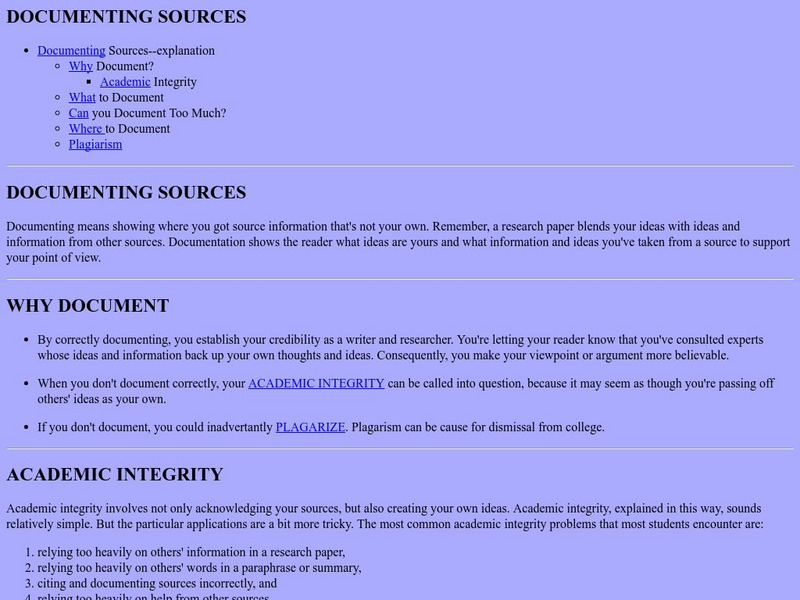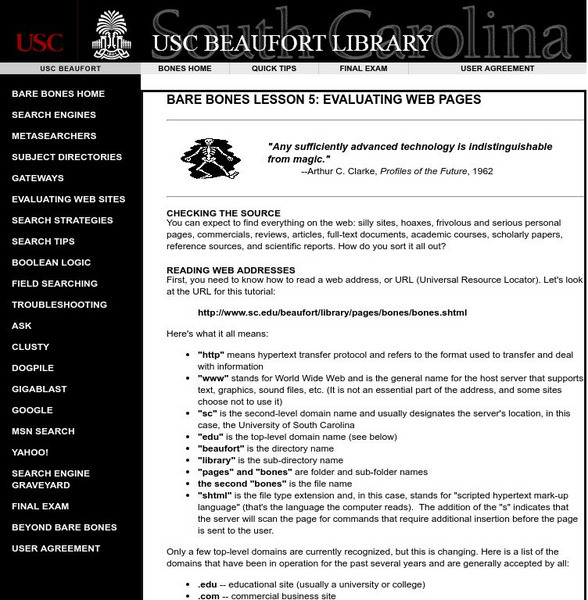Texas Education Agency
Texas Gateway: Analyze the Relevance, Quality, and Credibility of Evidence
[Accessible by TX Educators. Free Registration/Login Required] In this lesson, students will learn to analyze the quality, relevance, and credibility of evidence used to support an argument.
Department of Defense
Do Dea: Discovery and Attribution
The research process can be daunting, but it doesn't have to be overwhelming! After you complete this self-guided unit, you will be well prepared to write a research paper. You will learn how to choose a topic, evaluate the reliability...
Other
Intute Virtual Training Suite: Internet Detective: Wise Up to the Web
Focused on using the internet for college-level research, this valuable site is visually attractive and well-organized, and includes a number of interactive features.
Lumen Learning
Lumen: Building Credibility Through Source Integration
Well-integrated sources build credibility in several ways: Source material adds evidence and support to your argument, the signal phrase highlights the reputation and qualifications of the source, and effective citation makes it easy for...
Other
Oslis: Research Process
Excellent site outlining each step for Internet research for grades 6-12. This site focuses on writing a research paper from selecting a topic through to the final paper. Click on Cite My Sources to get the electronic citation machines....
iCivics
I Civics: News Literacy
Use this library of mini-lessons to teach students to recognize high-standards journalism so they can make informed judgments about the information coming at them and to help them identify and deal with misinformation, bias, opinion, and...
Online Writing Lab at Purdue University
Purdue University Owl: Evaluating Sources: General Guidelines
This entry focuses on evaluating your sources while reading them, giving suggestions on what to look for when reading.
PBS
Pbs Learning Media: Common Sense Education: Identifying High Quality Sites
Learn how to "test before you trust" the sites and information found on the Web in this lesson plan and student handout from Common Sense Education. Assessing what you find on the Web is an essential skill for today's students. Use this...
PBS
Pbs Learning Media: Why Is Fake News So Effective?
This lesson frames the controversial issues of fake news and trust in the media with the historical context of yellow journalism and sensationalist reporting. Students learn strategies for improving their media literacy and will be able...
Other
Clark College Libraries: Evaluating Information: Hoax or Real?
You probably know that anyone can put anything on the web. You might even be aware that much information on the web is inaccurate. Some misinformation is unintentional - a result of sloppy or incomplete research. But other sites contain...
Other
Portland Community College: Know Your Sources: A Guide to Understanding Sources
When doing research you will come across a lot of information from different types of sources. How do you decide which source to use? From tweets to newspaper articles, this tool provides a brief description of each and breaks down 6...
Arizona State University
Arizona State U.: Research Success for High School Students: Evaluating Sources
A collection of resources for evaluating sources. Topics covered include knowing your sources, assessing whether a source is scholarly, the CRAAP Test (includes chart, worksheet, and website evaluation sheet), and how to identify fake news.
Thinkport Education
Thinkport: Researching With Reliable Web Sources
A module to learn essential skills needed to research a topic.
Brigham Young University
Apa Reference Style: Tightening Up Your Citations
This site contains a lot of general information about the APA (American Psychological Association) style of documentation, much of which can be obtained from other sites and sources; however, this site does contain practice exercises for...
Library of Congress
Loc: Teachers: Using Primary Sources
The Library of Congress provides teachers with a framework that will help integrate primary sources into all areas of the curriculum. Sections include "Why to Use Primary Sources," "Citing Primary Sources," and "Finding Primary Sources."
University of South Florida
Fcat Express: Fact & Opinion
Strategies to help students recognize the difference between fact and opinion provided by a standardized test preparation site intended for fourth grade. Includes teaching ideas such as analyzing facts and opinions in newspapers, and...
SUNY Empire State College
Empire State College: Documenting Sources
Here's a basic guide to documentation -- more of the why and what and when, than the actual format.
Towson University
Towson University: Online Writing Support: Plagiarism Information
This page offers links to information about plagiarism, how to prevent it, statistics, and consequences.
Lumen Learning
Lumen: Boundless Communications: Credibility Appeals
In this Boundless Communication, students will learn about the importance of credibility in public speaking. There are four sections: defining credibility, types and elements of credibility, building credibility, and ethical usage....
Cambridge Rindge & Latin School
Cambridge Rindge & Latin School: Citing Sources: Parenthetical Documentation
An excellent tip sheet on how to document sources while writing and creating a research paper. Includes in-depth information and examples.
Cambridge Rindge & Latin School
Cambridge Rindge & Latin School: Making a Works Cited
An excellent tip sheet on how to write and develop a works cited and documentation list for a research paper. Includes in-depth information and examples.
University of Sydney (Australia)
The Write Site: Acknowledging Sources
An explanation of plagiarism is included this learning module. Students will learn why it is important to cite all sources during a research
Other
Web Treasure Hunt: 10 Quest. To Test Newsroom Literacy
This is a great exercise for critical thinking, problem solving and sharpening web search skills. Plenty of explanation accompanies the answers.
Other
Bare Bones Lesson 5: Evaluating Web Pages
Read web addresses with confidence, check the content and vital statistics and be more discriminating in your selection of web resources after you take this mini-lesson in website evaluation.







